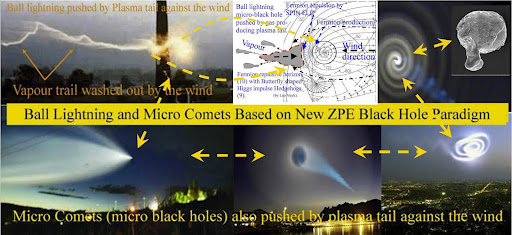Abundance of X-shaped radio sources with off-axis distortions. Z=0.2-0.8. by D.H.Roberts et al. in line with the Quantum FFF model .
See:THE ABUNDANCE OF X-SHAPED RADIO SOURCES I.
VLA SURVEY OF 52 SOURCES WITH OFF-AXIS DISTORTIONS
http://arxiv.org/pdf/1503.02017v3.pdf
Merging or not merging that seems the question.
Not only in the early universe but also later, black holes seem to do the same pairing and splitting trick to form Herbig Haro systems, stars and dwarf galaxies at Z=0.2-0.8.
However, the LIGO merging of black holes tell us that there exist some boundary condition for the quality of two BHs to merge or repulse by plasma tails.
The Quantum FFF solution is: that the BH plasma tail propulsion/repulsion ( pairing and splitting) trick only take place in space conditions without too much crowded BH space influences.
Conclusion: The merger BHs (see LIGO) are supposed to take advantage of the crowded BH space around Galaxy centers.
see album:
"Only Giant central merger black holes inside old galaxies".
https://www.flickr.com/photos/93308747@N05/albums/72157633148982901
Crowded Black hole hierarchy and vacuum complexity in the center of galaxies, as the boundary condition for merger super nova black holes into ONE central super massive BH.
The absence of a local single gravity direction for plasma tail steering behind the propelled BH, seems to create the the possibility to merge BHs instead of mutual repulsion as observed in X-shaped radio sources.
Below: The Plasma-Black Hole propulsion Trick.
The approach of TWO plasma tailed black holes, the production af a gas bar as the start of a Herbig Haro system by the more or less linear splitting of the BHs (A or B).
"This visualization of the 3-D structure of the Pillars of Creation within the star formation region of the Eagle Nebula (M16 below) is based on new observations of the object using the MUSE instrument on ESO’s Very Large Telescope in Chile. The pillars actually consist of several distinct pieces on either side of the star cluster NGC 6611. In this illustration, the relative distance between the pillars along the line of sight is not to scale."
Below: This is the Plasma-Black Hole propulsion Trick made for uneven massive black holes.The smallest BH is able to split the larger BH into two even halves (left).
The approach of TWO plasma tailed black holes, the production af a tailed gas bar as the start of a Herbig Haro system by the more or less linear splitting of the BHs. forming two Stellar Anchor Black Holes A or B (right).
Systematic sketches of Galaxy Anchor Black Hole (GABH) relation with galaxy types and form.








